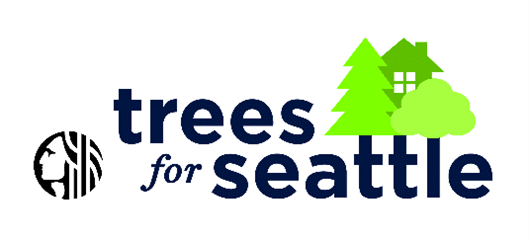Published on:

| Trees for Neighborhoods provides: · Up to 3 trees per household (lifetime max of 6 per address). · Help in selecting the right tree and planting location. · A watering bag and mulch for each tree. · Training on proper planting and care. · Assistance applying for street tree planting permits. · Ongoing care reminders and future pruning workshop opportunities · (If needed) Assistance planning your tree(s). (Limited availability) · Street tree health evaluations for first few years. |
August 7th is the deadline for Seattle residents to submit their applications for this year’s Trees for Neighborhoods program. Since 2009, this free program has helped Seattleites plant more than 13,400 trees in their yards and along adjacent streets.
Approved applicants are required to attend a live training workshop on planting and caring for their trees before their trees are delivered. Delivery is scheduled to begin on October 2nd.
The Trees for Seattle website has all the details, including: the application, tree choices, steps to planting a new tree, important dates (including the workshop dates), your responsibilities, tree delivery information and how to contact the program staff.
If the popular program draws more applicants than the number of trees that are available, applications are chosen at random; others are placed on a waitlist. A weighted lottery selection process is used so the city can increase coverage in low canopy neighborhoods.
Seattle’s tree canopy helps clean the air and water, cool sidewalks and homes and make neighborhoods healthier. The canopy includes trees in public spaces like parks, forested natural areas and rights-of-way; private lands (neighborhoods and spaces like universities and the Arboretum).
An estimated 58% of Seattle’s trees are located on private land. Natural areas in parks make up only 5% of the city’s land but comprise 14% of the city’s canopy.
Earlier this year, Seattle released its 2021 tree canopy assessment. It showed a slow decline during the period 2016 to 2021. The city has lost 255 acres of tree canopy (roughly equivalent to the size of Green Lake).
On a percentage basis, Seattle’s tree canopy cover is 28.1%, down from 28.6% in 2016. The city is striving to achieve 30% cover by 2037.
The assessment showed canopy loss is not happening equitably. Neighborhoods impacted by racial and economic injustice started with less canopy and lost more than the citywide average, according to the report.
“Tree canopy cover is critical for lowering temperatures and reducing heat island effects in our warming climate,” wrote the author of the Greenspace Blog by the city’s Office of Sustainability & the Environment. The report notes that on a hot day, neighborhoods with 25% canopy cover were one degree cooler than neighborhoods with no canopy.
“Strategies must better align development and tree preservation,” said Jessyn Farrell, director of Seattle’s Office of Sustainability & Environment. Those strategies must include innovative and equity-driven actions in planning, maintenance, planting, and engagement, she added.
“In short, a healthy, thriving Seattle needs more housing and more trees and we can absolutely do both,” Farrell proclaimed.